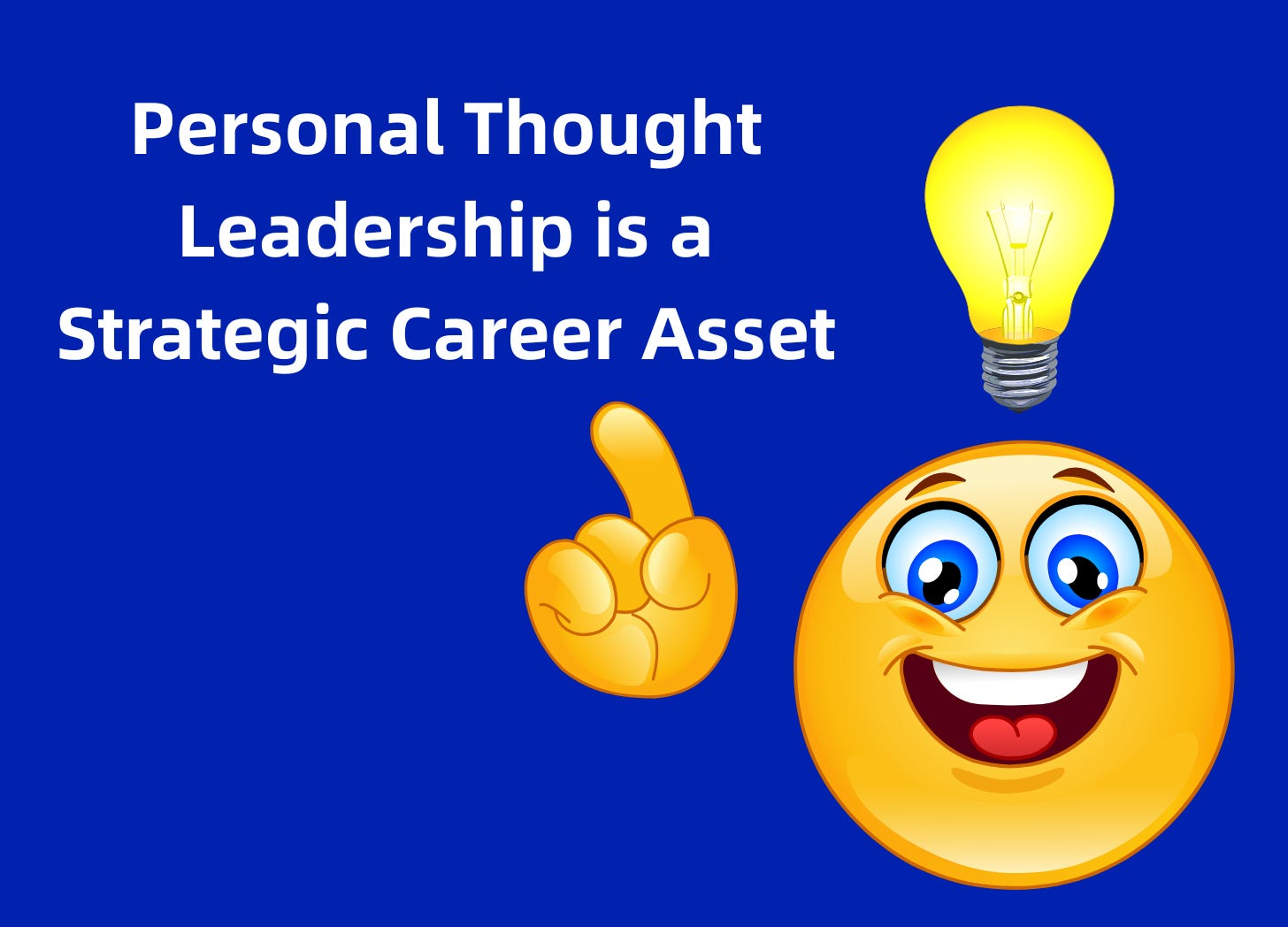If you’re a Director, VP, or executive, chances are your calendar is full, your inbox is relentless, and your performance is measured by outcomes that don’t leave much room for personal branding.
But here’s the truth…
The people who get the biggest opportunities—the stretch roles, board invites, CEO referrals—aren’t just good at their jobs. They’re known for how they think.
That’s the quiet power of personal thought leadership.
Creating content connected to your expertise, your values, and your point of view on your industry doesn’t just build awareness, it creates career gravity. It pulls in the kinds of conversations, connections, and opportunities that can change the trajectory of your career.
This is not about becoming a LinkedIn influencer.
It’s about being intentional with the knowledge and perspective you already have and using it to clarify your value to the market.
Why Thought Leadership Works for Executives
Here’s what happens when you consistently create thought leadership aligned with your professional brand:
1. You become easier to find and to remember.
People in your network (and beyond) start to associate you with specific ideas or insights. That makes it easier for them to recommend you, refer you, or reach out when the right role or project opens up. You’re not all things to all people. You are highly valuable to specific people in defined circumstances.
2. You stand out from the crowd.
At the VP or Director level, resumes all start to look the same. Lots of people can create the same results that you do. Personal thought leadership is how you differentiate. It shows your strategic thinking, not just your past roles. Strategy skills are what set you up for the most senior executive opportunities.
If you want to get more intentional about building your thought leadership or you need a programmatic way to connect your executives to market-moving conversations, let’s talk. I advise individuals and companies on how to do this with clarity, credibility, and scale.
👉 Schedule an intro call to explore how I can help.
3. You shape perception at scale.
One well-written piece can be shared, saved, or screen-shotted across hundreds of conversations. It’s an exponential multiplier for your reputation. And it’s a narrative you control.
4. You build a future-proof brand.
Roles change. Companies restructure. Markets shift. But if you’ve cultivated a strong personal brand through thoughtful content, you’re always in demand.
Thought Leadership That Works (and Doesn’t Get You Fired)
You don’t need to share proprietary strategy decks or comment on every industry headline. In fact, the best thought leadership comes from a place of clarity and restraint.
Here are a few principles to follow:
Stay aligned, not conflicted. Don’t contradict your company’s public positions. If your employer is all-in on AI and you’re skeptical, don’t pick a fight online. Save it for your next role.
Protect internal information. Never share sensitive data, client details, or anything that would violate confidentiality. Insight does not equal sharing confidential intel.
Focus on your thinking, not your employer’s. The best posts and articles illuminate how you approach leadership, decision-making, growth, or complexity. That’s what builds trust. Anyone can be a parrot. Far fewer can be the one whose message gets parroted.
Tie it to your future. If your career goal is to become a CEO, write like one. If you want to advise boards on transformation, share frameworks that reflect that lens. Your content should point to the direction you're headed, not just where you’ve been.
What to Write About
Not sure where to start? Here are a few low-risk, high-impact angles:
Keep reading with a 7-day free trial
Subscribe to Katrina’s Career Wisdom to keep reading this post and get 7 days of free access to the full post archives.




